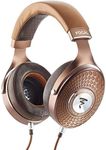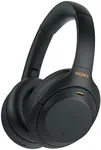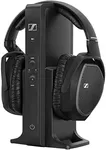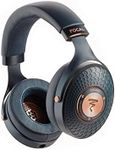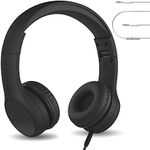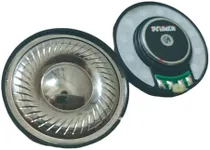Buying Guide for the Best Closed Back Headphones
Choosing the right closed-back headphones can significantly enhance your listening experience, whether you're using them for casual listening, professional audio work, or gaming. Closed-back headphones are designed to isolate sound, providing a more immersive experience by blocking out external noise. To find the best fit for you, it's important to understand the key specifications and how they align with your needs.Sound QualitySound quality is crucial as it determines how well the headphones reproduce audio. This includes clarity, bass, treble, and overall balance. High-quality sound is important for audiophiles and professionals who need accurate sound reproduction. For casual listeners, a balanced sound with good bass might be more enjoyable. Look for headphones with a wide frequency range (20 Hz to 20 kHz is standard) and low Total Harmonic Distortion (THD) for the best sound quality.
Comfort and FitComfort and fit are essential, especially if you plan to wear the headphones for extended periods. This includes the padding on the ear cups and headband, the weight of the headphones, and the clamping force. Lightweight headphones with soft, breathable padding are ideal for long listening sessions. Adjustable headbands and swiveling ear cups can also enhance comfort. Try to find a pair that fits snugly but not too tightly, to avoid discomfort.
Noise IsolationNoise isolation refers to the headphones' ability to block out external sounds. This is particularly important in noisy environments or for professional use where you need to focus on the audio. Closed-back headphones naturally provide better noise isolation than open-back models. Look for headphones with good passive noise isolation, which is achieved through the design and materials of the ear cups. Some models also offer active noise cancellation (ANC) for even better isolation.
DurabilityDurability is important to ensure your headphones last a long time, especially if you plan to use them frequently or take them on the go. This includes the build quality of the headphones, the materials used, and the quality of the cables and connectors. Look for headphones with a sturdy build, metal or high-quality plastic components, and detachable cables, which can be replaced if they get damaged. A carrying case can also help protect your headphones when not in use.
PortabilityPortability is a key factor if you plan to use your headphones on the go. This includes the size and weight of the headphones, as well as how easily they can be stored or transported. Foldable designs and carrying cases can make it easier to take your headphones with you. Lightweight and compact models are ideal for travel, while larger, more robust models might be better suited for home or studio use.
ImpedanceImpedance is a measure of the electrical resistance of the headphones and affects how much power they need to produce sound. Low-impedance headphones (under 50 ohms) are suitable for use with portable devices like smartphones and laptops, as they require less power. High-impedance headphones (over 50 ohms) are better suited for use with dedicated amplifiers or professional audio equipment, as they can handle more power and often provide better sound quality. Choose based on the devices you plan to use with your headphones.
Frequency ResponseFrequency response indicates the range of sound frequencies the headphones can reproduce, typically measured in Hertz (Hz). A standard range is 20 Hz to 20 kHz, which covers the full spectrum of human hearing. Some headphones offer extended ranges for enhanced bass or treble. If you prefer a particular type of sound, such as deep bass or clear highs, look for headphones with a frequency response that emphasizes those frequencies. For general use, a balanced frequency response is ideal.

